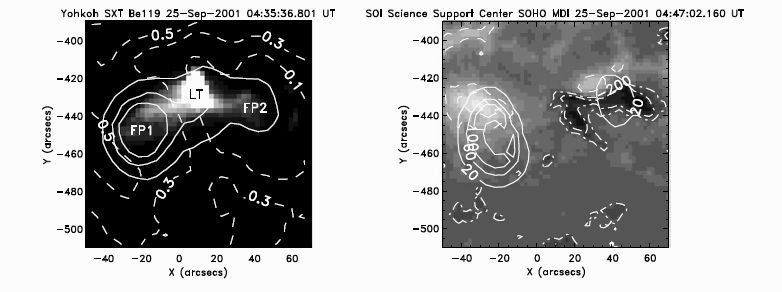Determination of intrinsic mode and linear mode coupling in solar microwave bursts
2013-05-07An explicit equation of the propagational angle of microwave emission between the line-of-sight and the local magnetic field is newly derived based on the approximated formulae of nonthermal gyrosynchrotron emission (Dulk and Marsh in Astrophys. J. 259, 350, 1982). It could be used to determine the intrinsic mode and linear mode coupling in solar microwave bursts. However, a 180-degree ambiguity still exists in the direction of longitudinal magnetic field, to produce an uncertainty of the intrinsic mode. The new instruments (such as FASR and Chinese radio heliograph with multiple frequencies) will help to resolve the uncertainty of peak frequencies in different locations. This works was published in the Astrophysical Journal, please see HUNG Guangli , SONG Qiwu , LI Jianping 2013, Astrophys Space Sci. , Vol. 345, No. 1 (http://link.springer.com/content/pdf/10.1007%2Fs10509-013-1372-y.pdf) for more details.

Left panel: Yohkoh/SXT image overlaid by NoRH/17 GHz contours of 0.1, 0.3 and 0.5 maximum brightness temperature (solid) and polarization of 0.1, 0.3, and 0.5 (dashed). Left right panel: MDI magnetogram overlaid by the calculated propagational angle of 20, 60, and 100 degree (solid), and magnetic strength of 1500 and 2500 Gauss (dashed), ?200 and ?800 Gauss (dot-dashed). Left bottom panel: the light curve and polarization degree of NoRH/17 GHz in FP1 (solid and dot-dashed, respectively) and FP2 (dashed and dotted, respectively), the position of FP1 and FP2 is marked in the left top panel. Right bottom panel: the time evolution of the propagational angle in FP1 (solid and dotted) and FP2 (dashed), the horizontal line marks the angle of 90 degrees.

 Search
Search

